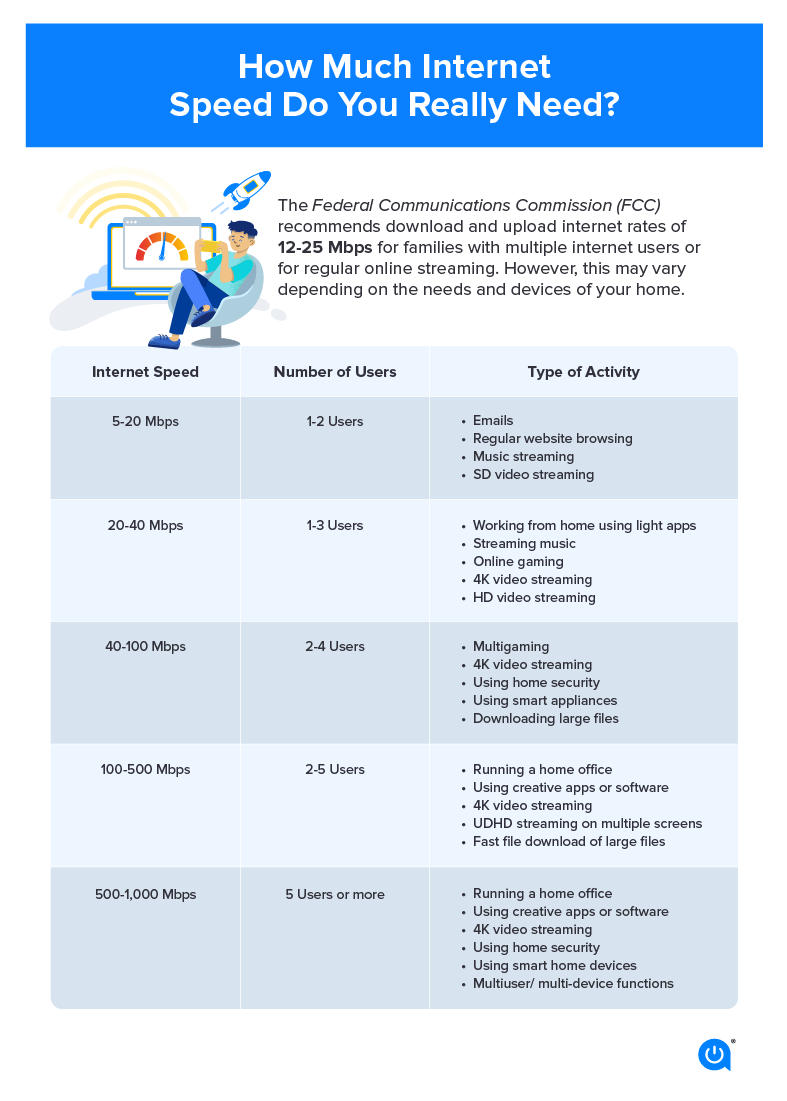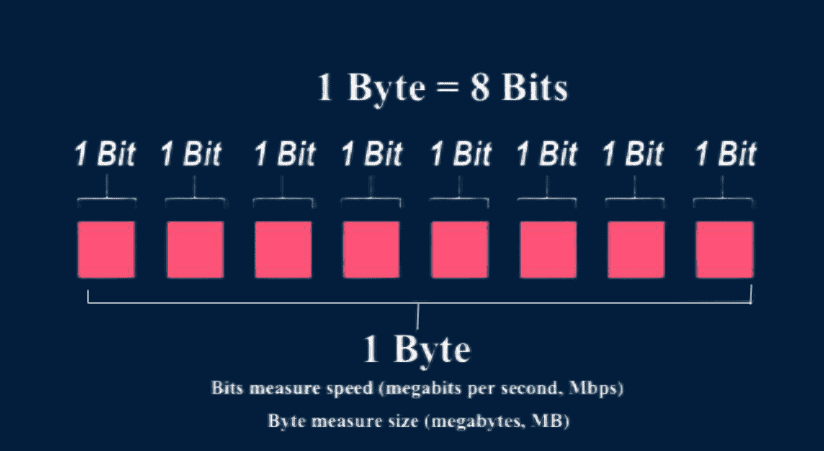A Comprehensive Overview to Measuring Megabits Per Second for Home Use
A Comprehensive Overview to Measuring Megabits Per Second for Home Use
Blog Article
Exactly How Megabits Per Second Influence Your Online Tasks
The concept of megabits per second (Mbps) plays a crucial duty fit our on-line experiences. As electronic tasks multiply, understanding the implications of Mbps on streaming, video clip, and video gaming conferencing becomes significantly essential. Greater Mbps can improve performance and minimize disturbances, while insufficient rates may cultivate aggravation and ineffectiveness. Examining your house's particular needs in connection with these rates is important, particularly as numerous tools try data transfer. Yet, the nuances of how Mbps influences different online activities require more expedition, specifically as our dependence on electronic connectivity remains to evolve.
Comprehending Megabits Per Second
When taking into consideration net rate, it's important to understand the idea of megabits per second (Mbps), which works as a basic measurement for information transfer prices. This metric quantifies exactly how much data can be transferred over an internet connection in one second, supplying a clear understanding of performance capabilities - Megabits Per Second. For context, one megabit is equivalent to one million bits, and Mbps is generally utilized to share transmission capacity for various online tasks
A greater Mbps shows a quicker internet connection, enabling individuals to carry out tasks such as downloading data, surfing sites, and taking part in on the internet gaming extra effectively. For circumstances, typical browsing calls for around 1-5 Mbps, while streaming high-def video might require 5-25 Mbps. Recognizing these needs is critical for determining the appropriate net rate required for particular activities.
In addition, the number of tools linked to a network can affect total efficiency. Numerous individuals streaming, pc gaming, or downloading at the same time can strain readily available bandwidth, leading to slower speeds - Megabits Per Second. Examining personal online habits and requirements is important in picking an internet strategy that aligns with one's needs, making certain a seamless digital experience
Streaming and Buffering Issues
Streaming high-def material has actually ended up being a staple of modern-day on the internet home entertainment, yet it is often come with by discouraging buffering problems. These disruptions can dramatically interfere with the seeing experience, causing discontentment and possible loss of audience engagement. Buffering takes place when the data sent from the streaming service is not received rapidly sufficient to maintain a smooth playback, usually due to insufficient internet speed determined in megabits per second (Mbps)

Furthermore, real-time streaming can be impacted by network congestion, which happens when several tools share the same data transfer. Subsequently, optimizing link speed and making sure ample Mbps is necessary for a smooth streaming experience. As streaming services remain to progress, recognizing the influence of Mbps on buffering concerns continues to be essential for customers looking for undisturbed home entertainment.
Online Gaming Performance
The impact of internet speed on online tasks expands beyond streaming, dramatically affecting on the internet gaming performance. In competitive video gaming, reduced latency and high bandwidth are essential for a smooth experience. A quick connection lessens lag, allowing gamers to react swiftly to in-game occasions, which can be the difference between triumph and defeat.
Data transfer, gauged in megabits per second (Mbps), plays a vital duty in sustaining several gadgets and pc gaming systems simultaneously. Not enough transmission capacity can cause dropped connections or decreased video game high quality, negatively affecting gameplay. On the internet multiplayer games require substantial information transfer, especially throughout peak pc gaming hours when many players are online.
Hectic first-person shooters demand greater rates to keep responsiveness, while turn-based method games may operate reasonably well on lower speeds. As online video gaming continues to advance, with boosting graphical fidelity and even more intricate multiplayer atmospheres, the demand for greater Mbps i was reading this will just escalate.
Video Clip Conferencing Quality
In today's electronic landscape, video clip conferencing high quality is heavily influenced by internet rate, particularly in terms of data transfer and latency. Top notch video clip calls call for sufficient data transfer to send audio and video data perfectly. Usually, a minimum of 1.5 Mbps upload and download rates is recommended for common meaning video, while high-definition video conferencing usually requires at least 3 Mbps.
Latency, or the delay between sending and getting information, also plays a critical function in the individual experience. Reduced latency guarantees that conversations circulation normally without uncomfortable pauses or disruptions. Preferably, latency needs to be below 150 milliseconds for efficient interaction. Greater latency can cause echo, lag, and disjointed communications, which can prevent cooperation and engagement throughout conferences.
Moreover, numerous individuals in a video clip conference can strain readily available transmission capacity, demanding also greater speeds. Network blockage, frequently brought on by synchronised activities like streaming or downloading, can further break down video clip high quality. Hence, for organizations depending on video conferencing for remote partnership, recognizing the relationship between megabits per overall and second interaction quality is crucial for maintaining performance and enhancing digital interactions.
Picking the Right Net Plan
Selecting a suitable net strategy is vital for guaranteeing optimal efficiency in various online activities, particularly in settings that require high transmission capacity, such as video conferencing and online gaming. Megabits Per Second. When thinking about an internet strategy, it is important to examine both the speed and information allowance to match your particular usage More hints needs
For families with multiple users involving in simultaneous tasks, a plan providing higher megabits per second (Mbps) is recommended. Usually, a minimum of 25 Mbps appropriates for standard streaming and browsing, while strategies exceeding 100 Mbps are more suitable for more intensive tasks. Additionally, think about the nature of your online tasks; video clip conferencing calls for a minimum of 1.5 Mbps upload speed, while on the internet pc gaming might need a lower latency yet consistent link.
It is additionally essential to assess your data cap. Unlimited data plans can avoid throttling and disturbances, specifically if heavy use is expected. Last but not least, research study service carriers in your area, as availability and pricing can vary. By thoughtfully picking a web plan tailored to your requirements, you can enhance your on the internet experience, guaranteeing smooth, continuous accessibility to your favored activities.
Conclusion
In verdict, the importance of megabits per second (Mbps) in forming on-line activities can not be overstated. A comprehensive understanding of specific or home Mbps needs is essential for picking an ideal internet plan that properly supports diverse online tasks and individual needs.

Usually, a minimum of 25 Mbps is appropriate for conventional streaming and surfing, while plans going beyond 100 Mbps are more suitable for even more intensive jobs. Additionally, take into consideration the nature of your online tasks; video conferencing calls for at least 1.5 Mbps upload speed, while online video gaming may require a reduced latency yet consistent link.
Report this page